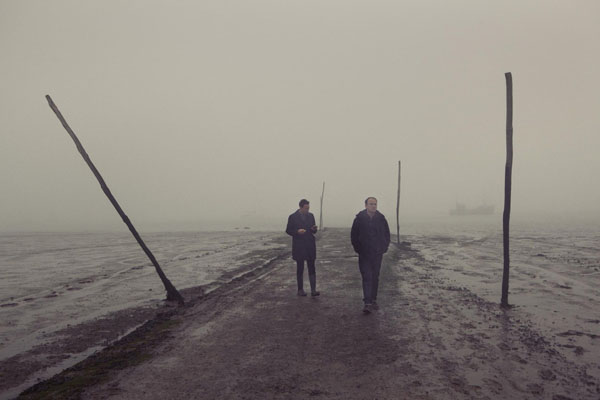“Originally a four-part TV miniseries aired in Britain to general acclaim last month, Southcliffe is plainly reaching for the nuanced, novelistic, noir-ish heights of multicharacter dramas like The Killing or The Wire,” begins Stephen Dalton in the Hollywood Reporter. “Director Sean Durkin, a Canadian raised in the UK and New York, scored a critical hit with his 2011 feature debut Martha Marcy May Marlene. Southcliffe‘s writer is Tony Grisoni, whose credits include several Terry Gilliam screenplays plus co-scripting Kevin Macdonald’s latest thriller How I Live Now… The looping, time-scrambled plot opens with the massacre of 15 people by a crazed lone gunman in the sleepy English backwater of Southcliffe. The town and murders are fictional, but British viewers will recognize clear parallels to several similar events in recent history, most obviously the Hungerford massacre of 1987 and the West Cumbria shootings of 2010. But Southcliffe is less concerned with the killing spree—only depicted fleetingly in fragmentary flashbacks—than in its shattering emotional and psychological aftermath.”
“The first two episodes of Southcliffe rank amongst the very best of the current wave of intelligent, artful television that we are currently living through,” finds Twitch‘s Todd Brown. “And then, sadly, Southcliffe seems to simply forget what it was that it was doing so well. Episode three descends into maudlin melodrama… And episode four gets worse.”
But for Ben Kenigsberg, writing at the AV Club, “Southcliffe doesn’t become compelling until the third of four episodes—though even then, as Rory Kinnear’s Southcliffe-raised, London-based TV reporter is drunkenly shouting that the town deserved what it got, the movie has safely left the realm of common sense. Some affecting turns (by Shirley Henderson and especially Eddie Marsan as a grieving couple) salvage some of it, but the film is an unilluminating—and, with its unvaried palette of gray tones, under-illuminated—wallow in grief.”
And then Indiewire‘s Alison Willmore finds the series to be “exquisitely made, intensely acted and as consistently (and punishingly) wrenching… Southcliffe inescapably recalls Gus Van Sant’s 2003 film Elephant, not just in subject matter but in the way its nonlinear approach and gliding cinematography suggest a tragedy already frozen in time. We can track forward and backward, look at events and people from different angles, but the result is still the same, and any attempts to find a larger meaning and signals that it was coming are useless.”
Writing for Cinema Scope, Michael Sicinski finds that “with so many characters trying to arc in four 45-minute blocs, we eventually end up with the sort of histrionics that derive less from comprehensive character development than the need for decisive episode endings. And this is the fundamental problem: a work of cinema would probably strive to do less, and hit the mark, or not be cued to predetermined episodic beats. But now, we seem to be treating TV series as if they were long films, and assuming they are accordingly complex and nuanced. This is a misunderstanding of the compositional dimension of time-based art, to say the least. If longer equalled richer, then One Day at a Time is approximately eight times the achievement of Sátántangó.”
Southcliffe is a Special Presentation in Toronto.
Toronto 2013 Index. For news and tips throughout the day every day, follow @KeyframeDaily on Twitter and/or the RSS feed. Get Keyframe Daily in your inbox by signing in at fandor.com/daily.




